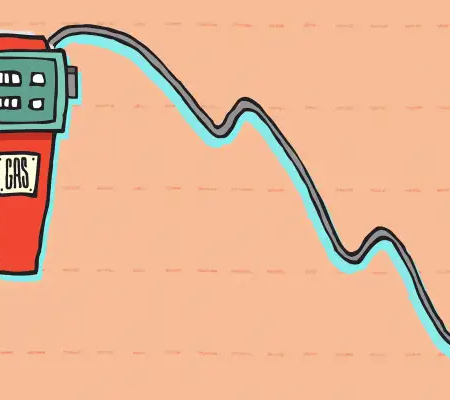(Image Credit: Getty Images)
As summer starts to wind down, those planning a final road trip over the Labor Day weekend will find a bit of relief at the pump. Gas prices, which have been a point of concern for drivers over the past year, are now on a downward trajectory. With the national average price for a gallon of regular gasoline dipping to $3.38—more than 20 cents lower than just a few months ago and nearly 50 cents cheaper than last year—it’s worth exploring what’s driving this decline and what might lie ahead.
A Welcome Drop in Prices
For many, the lower gas prices come as a pleasant surprise. The current national average represents a significant drop from earlier in the year and even more so from the highs seen in recent times. This decline provides a boost for motorists and travelers, especially those looking to take advantage of the extended summer by hitting the road.
Regional disparities, however, paint a varied picture. In states like California, where taxes on gasoline are among the highest in the nation, drivers are still facing much steeper prices—up to $4.59 per gallon. On the flip side, states like Mississippi benefit from lower fuel taxes, with prices as low as $2.93 per gallon. These differences highlight the significant impact that local tax policies have on fuel costs.
The Impact of Seasonal Changes
One of the primary factors contributing to the recent drop in gas prices is the seasonal transition from summer to winter gasoline blends. As the driving season wanes and the heat of summer gives way to cooler temperatures, refineries switch from producing the more expensive summer blend to the winter blend of gasoline. This winter blend, which evaporates at lower temperatures, is generally less costly to produce, contributing to lower prices at the pump.
The Hurricane Wild Card
Despite the encouraging trend, the road ahead isn’t without its potential bumps. The threat of hurricanes remains a significant concern. Hurricanes can wreak havoc on refining operations, leading to temporary supply shortages and price spikes. Last year, excessive heat and Hurricane Idalia caused considerable disruptions to oil production and refining, which in turn pushed prices higher.
This year, while the hurricane season has so far been less disruptive than anticipated, it remains an active period. The possibility of a hurricane making landfall in a refining area could lead to disruptions in fuel supply, causing prices to rise. Even though Hurricane Beryl caused some initial disruptions, the situation quickly normalized.
Historically, major hurricanes have had dramatic effects on fuel prices, leading to substantial increases. However, such storms are often seen as outliers. Typically, late-season hurricanes have less impact on fuel prices because the industry transitions to the less expensive winter blend of gasoline, and the summer driving season is coming to an end.
Other Factors at Play
In addition to seasonal changes and weather-related disruptions, global events and domestic trends also play a role in shaping gas prices. The rise of electric vehicles and shifts in demographic patterns in the U.S. influence long-term fuel consumption and pricing trends. While these factors have a more gradual impact, they contribute to the broader picture of gas price fluctuations.
In summary, the recent drop in gas prices offers a welcome relief for drivers, with prices potentially heading toward levels not seen since 2021. While the current trend is promising, it is important to remain aware of potential disruptions, such as hurricanes, that could impact future pricing. The interplay of seasonal changes, weather events, and broader trends will continue to shape the cost of gasoline in the coming months.


